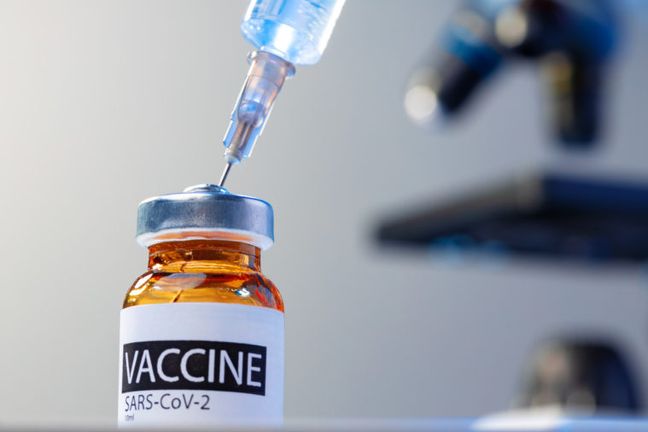History of Colorado’s Made Whole Doctrine
Colorado’s Made Whole Doctrine first appeared in 1989, in the case of Kral v. American Hardware Mut. Ins. Co.[i] However, the Colorado Supreme Court’s decision was limited to whether the enforcement of agreements reducing an insured’s liability for uninsured motorist coverage was proper when such enforcement would leave an insured less than fully compensated for loss caused by the negligent conduct of a financially irresponsible motorist. The Court ultimately determined, to the extent any reduction of benefits payable to a plaintiff under an uninsured motorist provision of a contract of insurance because of the terms of the subrogation clause and release-trust agreement would result in a plaintiff’s inability to obtain full compensation for the loss sustained, the agreements would directly violate the legislature’s intent to permit insureds who purchase such coverage to receive the benefits to the extent necessary for full compensation and would, therefore, be unenforceable.[ii]
With that, Colorado adopted the Made Whole Doctrine, but it remained limited to the uninsured motorist coverage context.
Legislative Intent of C.R.S. § 10-1-135
In 2010, the legislature passed C.R.S. § 10-1-135, which greatly expanded the Made Whole Doctrine. In the preamble, the legislature explained that when a payer of benefits seeks repayment of the benefits provided to an injured party, the repayment reduces the amount available to the injured party to compensate him or her for injuries and damages other than the cost of medical care and medical services.[iii] The aim of the new law was to ensure that reimbursement or repayment of benefits would not be permitted when an injured party would not be fully compensated for his or her injuries and damages and that such compensation would not be diminished by repayment, reimbursement, or subrogation rights of the payer of benefits.[iv] Therefore, an injured party who received benefits pursuant to an insurance policy, contract, or benefit plan was given priority for full compensation before the payer of benefits could seek repayment of benefits provided.[v]
What and Who does this Apply to on the Insurance Side?
“Recovery” is defined as a monetary award from a third-party through either settlement or judgment to compensate an injured party for bodily injury sustained as a result of an act or omission of the third-party, including benefits paid or settlement of claims under uninsured or underinsured motorist coverage.[vi]
The statute defined “benefits” as payment or reimbursement of health care expenses, health care services, disability payments, lost wage payments, or any other benefits of any kind, including discounts and write-offs, provided to or on behalf of an injured party under a policy of insurance, contract, or benefit plan with an individual or group, whether or not provided through an employer.[vii]
Furthermore, “payer of benefits” was defined to include any insurer, health maintenance organization, health benefit plan, preferred provider organization, employee benefit plan, other insurance policy or plan, or any other payer of benefits, but excluded a program of medical assistance under the Colorado Medical Assistance Act[viii] or the Children’s Basic Health Plan.[ix] [x]
The Common Fund Doctrine and its Inclusion in C.R.S. § 10-1-135
Under the common law, the Common Fund Doctrine was based on the equitable notion that those who have benefitted from litigation should share in its costs.[xi] For example, a plaintiff who undertakes to recover medical expenses at his or her own expense, and whose health insurer claims a right of reimbursement, will be entitled to share the costs associated with the recovery with his or her health insurer.[xii]
In drafting C.R.S. § 10-1-135, the legislature expressly recognized that a loop hole had existed whereby payers of benefits were seeking repayment of benefits out of a recovery obtained by an injured party without paying attorney fees incurred by the injured party in obtaining the recovery, thereby benefitting from attorney services for which they did not pay.[xiii] So, beyond the issues of full compensation, C.R.S. § 10-1-135 included a requirement that a payer of benefits must pay a proportionate share of the attorney fees when the payer of benefits is a beneficiary of the attorney services paid for by the injured party.[xiv]
What does it mean to be “Fully Compensated?”
While C.R.S. § 10-1-135 permits subrogation “only if the injured party has first been fully compensated for all damages arising out of the claim,” it does not provide a benchmark by which one can determine whether an injured party has been “fully compensated.”[xv]
When reimbursement or subrogation is permitted, the amount recovered by the subrogated carrier cannot exceed: (1) the amount actually paid by the carrier, or (2) for benefits paid by a capitated plan, the amount equal to 80% of the usual and customary charge for the same services provided on a non-capitated basis in the geographic region in which the services are provided.[xvi] A “capitated” plan pays a specified amount periodically to a health provider for a group of specified health services, regardless of quantity rendered or actual reasonable and necessary cost of medical services provided.
Where an insured settles within the available third-party liability policy limits or uninsured or underinsured motorist coverage limits, C.R.S. § 10-1-135 creates a rebuttable presumption the insured has been made whole.[xvii] Moreover, in the event an insured litigates the case and receives a judgment, there is a presumption the amount of the judgment fully compensated the insured.[xviii]
C.R.S. § 10-1-135 is an Insured’s Exclusive Remedy in the Event of a Dispute
The legislature expressly made C.R.S. § 10-1-135 the exclusive remedy for an injured party and a payer of benefits in the event a dispute arose about the entitlement to reimbursement or subrogation, regardless of whether administrative remedies contained in the policy, contract, or benefit plan documents have been exhausted by the injured party.[xix]
60-Day Notice Period for Disputes and Arbitration
If an insured feels he or she has not been made whole, then the insured must notify the subrogated carrier within 60 days of receipt of the recovery and the notice must include: (1) the total amount of recovery; (2) the coverage limits applicable to any available policy or plan; and, (3) the amount of costs charged to the insured.[xx] If recovery was obtained through a settlement agreement that contains a confidentiality provision otherwise restricting the information required to be made part of the notice, C.R.S. § 10-1-135 niftily includes an express provision finding any such confidentiality provision unenforceable as to the disclosure of the required information.[xxi]
On the other hand, if a subrogated carrier disputes an insured has been made whole, the dispute must be resolved by way of arbitration and is similarly subject to a 60-day notice requirement. The 60-day period is triggered by receipt of notice from an insured.[xxii] Typical arbitrator selection rules apply, meaning an insured and the subrogated carrier must jointly choose an arbitrator to resolve the dispute. Should they be unable to do so, the dispute will be resolved by a panel of three arbitrators, one selected by the insured, one by the subrogated carrier, and the final one selected by the first two arbitrators.[xxiii]
No Direct Claim by an Insurer Against a Third-Party Unless the Insured has not Pursued a Direct Claim within 60 Days of the Running of the Statute of Limitations
A payer of benefits is not permitted to bring a direct action for subrogation or reimbursement of benefits against a third-party allegedly at fault for the injury to an insured or an insurer providing uninsured motorist coverage, unless the insured has not pursued a claim against the at-fault third-party sixty days prior to the date on which the statute of limitations applicable to the claim expires.[xxiv] An insured may nevertheless pursue a claim against the at-fault third-party after the insurer brings a direct action against the at-fault third-party, but the insurer’s right to reimbursement or subrogation is limited by the various presumptions discussed above about full compensation.[xxv] The at-fault third-party is precluded from including the subrogated carrier on any settlement draft.[xxvi]
Insurers Cannot Delay, Withhold or Reduce Benefits
A payer of benefits cannot delay, withhold, or otherwise reduce benefits because the obligation to pay benefits results from an act or omission for which a third party may be liable or as a means of enforcing or attempting to enforce a claim for reimbursement or subrogation.[xxvii]
Insurers Must Apply a Credit
When a payer of benefits obtains reimbursement of benefits paid, the insurer must apply the amount of the reimbursement as a credit against any lifetime maximum benefit contained in the policy, plan, or contract under which the benefits were paid.[xxviii]
C.R.S. § 10-1-135 does not Affect the Collateral Source Rule, Lien Rights of Hospitals, or Workers’ Compensation Matters
The legislature ensured C.R.S. § 10-1-135 would not modify C.R.S. § 13-21-111.6 regarding the reduction of damages based on amounts paid for the damages from a collateral source.[xxix] The fact or amount of any collateral source payment or benefits may not be admitted as evidence in any action against an alleged third-party tortfeasor or in an action to recover uninsured motorist benefits. Moreover, C.R.S. § 10-1-135 does not affect the lien right of hospitals or of the Department of Health Care Policy and Financing or the subrogation and lien rights granted to workers’ compensation carriers or self-insured employers.[xxx]
Takeaway
Pursuant to C.R.S. § 10-1-135 a subrogated insurer may not pursue subrogation or reimbursement for benefits paid to an injured plaintiff, unless the injured party has first been fully compensated for all damages arising out of the claim. Moreover, when pursuing subrogation or reimbursement, a subrogated insurer must pay a proportionate share of the attorney fees incurred by a plaintiff to recover from an at-fault third-party.
Insurers must be aware of and compliant with the 60-day notice period to dispute whether a plaintiff has been made whole or fully compensated, otherwise they risk losing their ability to pursue subrogation or reimbursement altogether. Any dispute must be submitted to arbitration for resolution. Moreover, the statute does curtail a subrogated insurer’s ability to bring a direct action against an at-fault third-party, so insurers must also be patient and wait for sixty days prior to the date on which the statute of limitations applicable to the claim expires before commencing any such action.
While C.R.S. § 10-1-135 does not provide a test by which a party or arbitrator can determine whether a plaintiff has been made whole or fully compensated, the recovery ceiling and presumptions set forth at C.R.S. § 10-1-135(3) must be carefully considered.
[i] 784 P.2d 759 (Colo. 1989).
[ii] Id. at 765.
[iii] C.R.S. § 10–1–135(1)(a).
[iv] C.R.S. § 10–1–135(1)(b)–(c).
[v] C.R.S. § 10–1–135(1)(d).
[vi] C.R.S. § 10–1–135(2)(d).
[vii] C.R.S. § 10–1–135(2)(a).
[viii] Articles 4 to 6 of title 25.5, C.R.S.
[ix] Article 8 of title 25.5, C.R.S.
[x] C.R.S. § 10–1–135(2)(c)(I)–(II).
[xi] Kuhn v. State, 924 P.2d 1053 (Colo.1996).
[xii] Catellari v. Partners Health Plan of Colo., Inc., 860 P.2d 593, 595 (Colo.App.1993).
[xiii] C.R.S. § 10–1–135(1)(e).
[xiv] C.R.S. § 10–1–135(1)(f).
[xv] C.R.S. § 10–1–135 (3)(a)(I).
[xvi] C.R.S. § 10-1-135(3)(b).
[xvii] C.R.S. § 10-1-135(3)(d)(I).
[xviii] C.R.S. § 10-1-135(3)(d)(II).
[xix] C.R.S. § 10-1-135(4)(a)(I).
[xx] C.R.S. § 10-1-135(4)(a)(II).
[xxi] Id.
[xxii] C.R.S. § 10-1-135(4)(a)(III).
[xxiii] C.R.S. § 10-1-135(4)(a)(IV)(A)–(C).
[xxiv] C.R.S. § 10-1-135(6)(a)(I)–(II).
[xxv] C.R.S. § 10-1-135(6)(a)(II).
[xxvi] C.R.S. § 10-1-135(6)(b).
[xxvii] C.R.S. § 10-1-135(7)(a)(I)–(II).
[xxviii] C.R.S. § 10-1-135(8).
[xxix] C.R.S. § 10-1-135(10)(a).
[xxx] C.R.S. § 10-1-135(10)(b)–(c).

 Author: Michael D. Drews
Author: Michael D. Drews
 Cannabis Workers Allege Quota to Trim 4 Pounds a Day Violates the California Labor Code
Cannabis Workers Allege Quota to Trim 4 Pounds a Day Violates the California Labor Code
 The Ninth Circuit Reminds Us: Every Word Matters
The Ninth Circuit Reminds Us: Every Word Matters
 NO WAY, PRO SE! The Consequences of Abusing the Judicial System as a Pro Se Litigant in Colorado
NO WAY, PRO SE! The Consequences of Abusing the Judicial System as a Pro Se Litigant in Colorado
 Victim of Financial Mismanagement or Unlawful Retaliation? New Jersey City University Program Founder Claims School Retaliated After Reporting Alleged Sexual Harassment
Victim of Financial Mismanagement or Unlawful Retaliation? New Jersey City University Program Founder Claims School Retaliated After Reporting Alleged Sexual Harassment
 “Real Housewives” Gets a Reality Check
“Real Housewives” Gets a Reality Check
 Missing a Chapter: Insufficiency of Expert Deposition Testimony in Medical Malpractice Litigation
Missing a Chapter: Insufficiency of Expert Deposition Testimony in Medical Malpractice Litigation
 Crash Course: Why Summary Judgment Misses the Mark in Illinois Multi-Cause Limousine Crash Collision
Crash Course: Why Summary Judgment Misses the Mark in Illinois Multi-Cause Limousine Crash Collision
 Bitter Truths: Lead, Cadmium, and Defective Pleadings in California Chocolate Class Action
Bitter Truths: Lead, Cadmium, and Defective Pleadings in California Chocolate Class Action
 The Law of Unintended Consequences: Including Insurance Brokers in Litigation Strategy Communication May Waive the Attorney-Client Privilege
The Law of Unintended Consequences: Including Insurance Brokers in Litigation Strategy Communication May Waive the Attorney-Client Privilege
 New York Expands Protections for Elderly and Opens the Door for Litigation
New York Expands Protections for Elderly and Opens the Door for Litigation
 Corporate Missteps Lead To Costly Settlement
Corporate Missteps Lead To Costly Settlement
 New York Updates Vaccination Requirements for In-Person Workplaces
New York Updates Vaccination Requirements for In-Person Workplaces
 New Rules for 2022 Governing Employee Compensation in Colorado
New Rules for 2022 Governing Employee Compensation in Colorado
 New York State Requires Employers to Notify of Electronic Monitoring
New York State Requires Employers to Notify of Electronic Monitoring
 Are New Jersey Insurers on the Hook for Restaurants’ COVID-19 Losses?
Are New Jersey Insurers on the Hook for Restaurants’ COVID-19 Losses?
 Colorado Restaurant Failed to Prove Physical Loss from COVID-19
Colorado Restaurant Failed to Prove Physical Loss from COVID-19
 Are Employer-Mandated Vaccines the Future? New York State Bar Association Says Yes
Are Employer-Mandated Vaccines the Future? New York State Bar Association Says Yes
 Exposure to First-Party Insurance Bad Faith Claims in Colorado
Exposure to First-Party Insurance Bad Faith Claims in Colorado